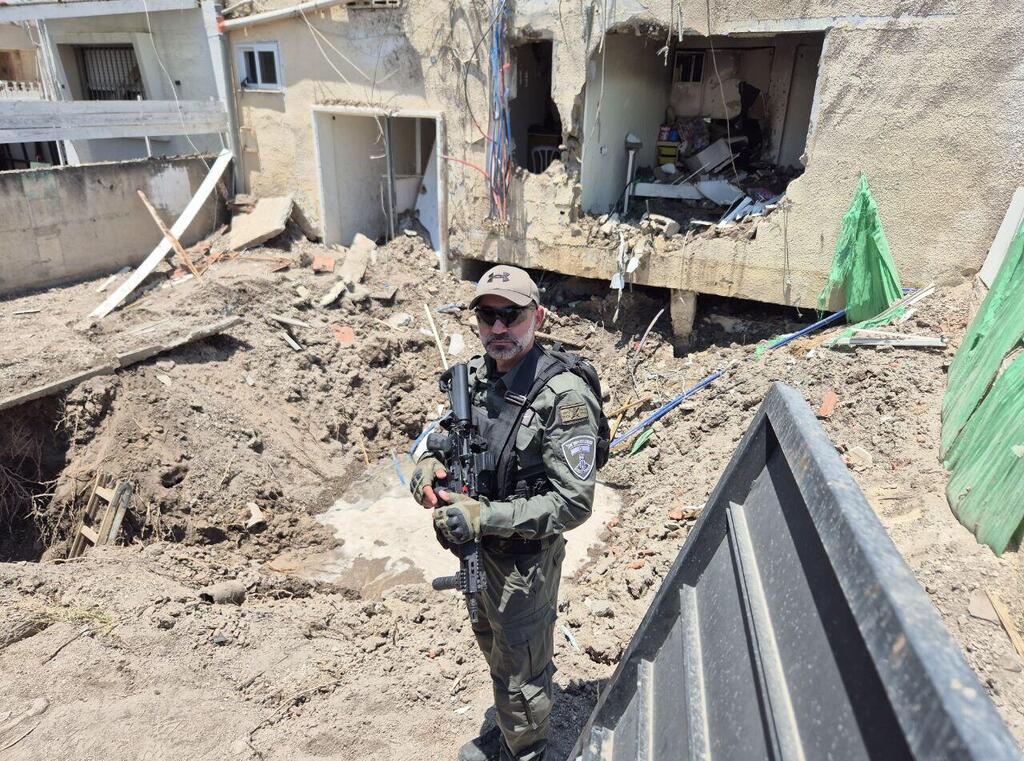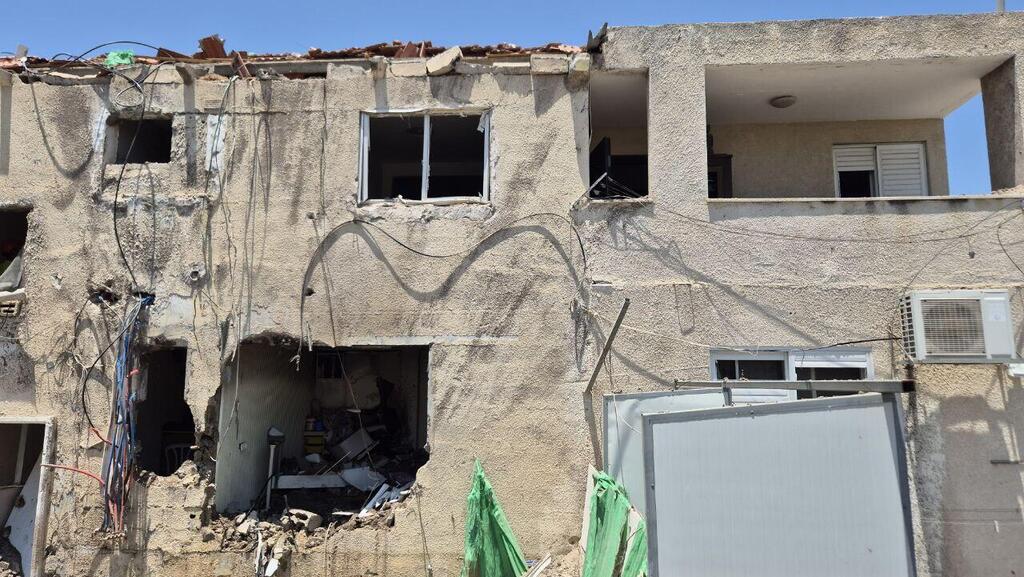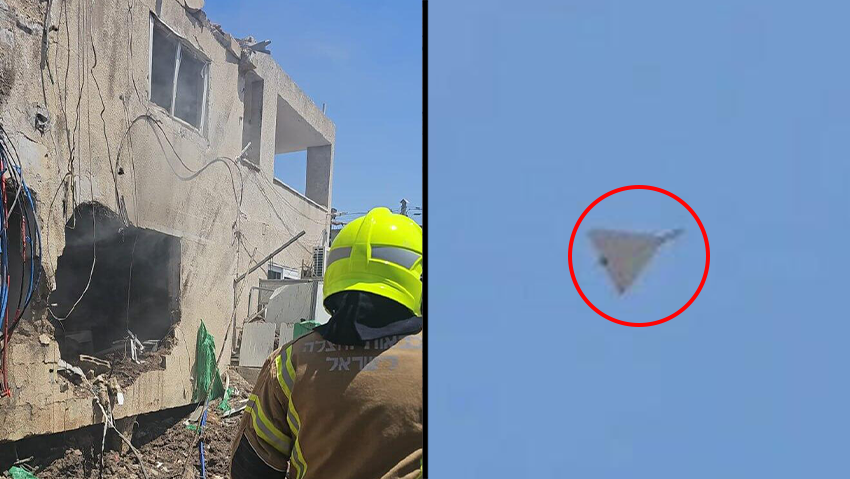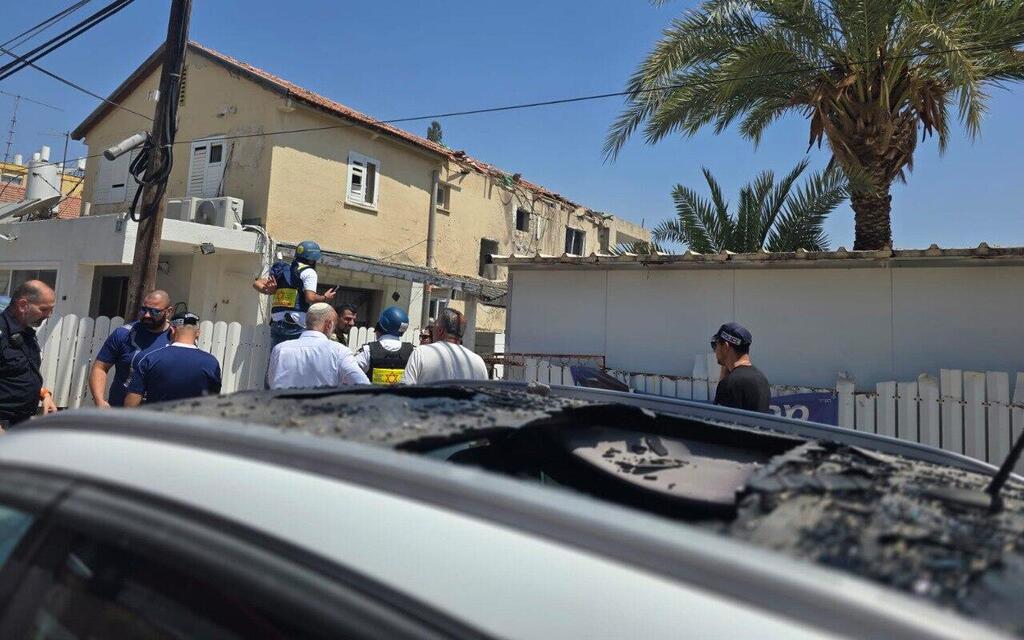Dramatic footage: Watch the moment an Iranian drone hit an apartment building in Beit She'an
After the commander of Iran's UAV unit was killed in by the Israeli Air Force last night more than 40 drones have penetrated our airspace; One hit a residence in Beit She'an without causing casualties and one fell in an open area in the Golan while the rest were intercepted; Meanwhile, there is concern about the safety of the Jordanian border.
More than 40 drones penetrated northern Israel, the south, and the Arava region early on Saturday morning. While most were intercepted, one struck an apartment building in Beit She’an, another was shot down over the Arava, and another exploded over open terrain in the Golan Heights. Residents of the apartment building in Beit She’an went down to the shelter and were unharmed.
Watch the moment that the apartment building in Beit She'an was hit:
Drone from Iran strikes an apartment building in Beit She'an
Alarms were activated in communities across the Golan Heights, in the Rotem industrial zone near Dimona, around Beit She’an, in the Gilboa region, and in the northern West Bank. In Eilat, missile defense interceptions were reported targeting drones arriving from the south, accompanied by detonations—likely from interceptions. No warning was issued in that instance, but shortly afterward alarms were activated due to another drone intrusion. Details regarding alarms in Eilat and the southern Negev are still under investigation.
Damage caused to apartment buidling in Beit She'an by the IRanian drone
(Video: Israel Moshkovitz, MDA spokesperson)
Pursuit of the Iranian drone in the skies over Beit She'an
(Photo: Lotan Tovi)
This event occurred about half a day after the Air Force eliminated the commander of the Revolutionary Guards’ drone brigade, Amin Pour Judaki, who had orchestrated hundreds of launches toward Israel from southwestern Iran. He had assumed a central role in the unit after his predecessor, Taher Pour, was killed about a week earlier on June 13.
The IDF spokesperson stated that, since Friday night, the Air Force has intercepted approximately 40 unmanned aerial vehicles. Additionally, a dual-launch drone launcher was targeted in Isfahan; it was reportedly prepared for immediate launches toward Israel. According to the statement, more than 470 unmanned aerial vehicles have been intercepted since the beginning of the war with Iran—some 99% of those that entered Israeli territory and were aimed at population centers or various targets. In a press briefing, Brigadier General Effi Defrin said that, in total, more than 1,000 unmanned aerial vehicles were launched from Iran, most intercepted outside Israel’s borders or downed in open areas.
Shai Abuksis, a resident of the second floor of the building struck in Beit She’an, told reporters at the scene: “Thank God we were with my mother-in-law when it happened. I saw on television that a drone had fallen on a house in Beit She’an. We turned on the TV, then realized what it had hit. They’re not allowing me near the area right now. I hope we’ll be able to salvage something from the apartment.”
Beit She’an’s mayor, Noam Juma’a, said at the scene that the lack of casualties was “a combination of a miracle and adherence to Home Front Command instructions. There was a family here who went down to the shelter. Beit She’an has remained open until now, and we hope it remains open from here on. It’s part of the State of Israel, which is currently in defense. It’s a tough country, and Beit She’an is tough too and knows how to cope with these things. Even at the nearby synagogue, the prayer service was stopped and everyone went down to the shelter.”
Afula’s fire station commander, Deputy Superintendent Asher Biton, added that “firefighters arrived quickly, scanned the building, and extinguished the fire. Thankfully there are no casualties on site. The residents went down to the shelter, so they were spared.”
8 View gallery
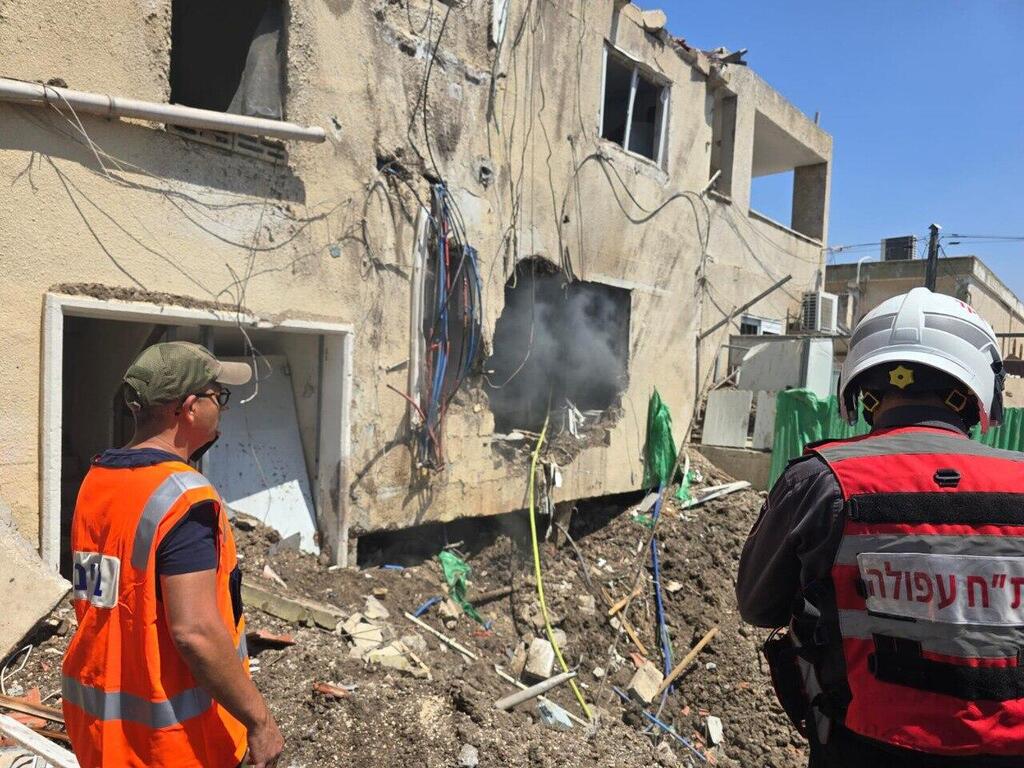

Damage to an apartment building in Beit SHe'an by an Iranian drone attack
(Photo: Israel Moshkovitz)
Shimon Abuksis, whose parents owned the house hit in Beit She’an, said at the scene: “It’s the house I grew up in. I heard about it about 45 minutes ago and came right away. We grew up here—nine siblings. It was very lucky. The nearby synagogue was full of worshippers.”
The IDF provided details about the incident: “Following the sirens that sounded regarding a hostile aircraft infiltration between 10:55 and 11:01 in the Arava area, a UAV launched from Iran toward the State of Israel was intercepted by the IAF. Following the sirens that sounded regarding a hostile aircraft infiltration at 11:15 in the southern Negev, a UAV launched from Iran toward the State of Israel was identified. Interception attempts were made, a fall in an open area was identified. Following the sirens that sounded regarding a hostile aircraft infiltration between 11:19 and 11:27 in the area of Eilat, a UAV launched from Iran toward the State of Israel was intercepted by the IAF."
Eilat has been on the list of Iranian drone targets for two days. On Friday and Saturday, drones were also intercepted over the Gulf and residents reported shrapnel falling on their homes. This is happening while Eilat's beaches, full of city residents and tourists from the center, who have come seeking refuge from missile threats, are officially closed. The Eilat municipality has clarified that in accordance with the Home Front Command's instructions, and despite the easing of the defense policy, the beaches are still closed and there are no rescue services. “It is important to remember,” the notice reads, “that there are no protected spaces on the beaches, and most interceptions occur over the gulf, so all maritime activities are prohibited.”
Remains of a drone in the Arava:
8 View gallery
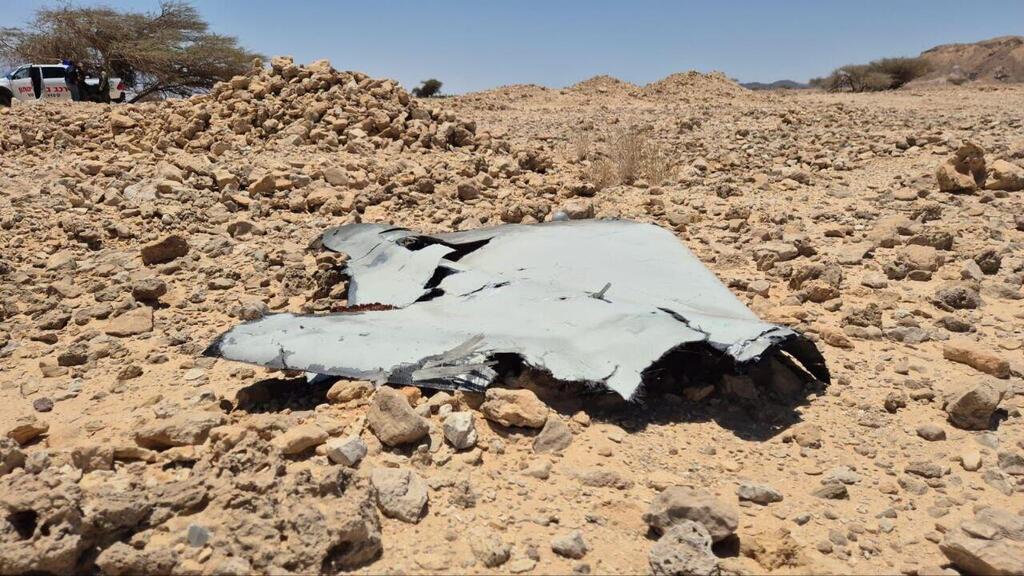

Fragments of the Iranian drone that was shot down in the Eilot region, Arava
(Photo: Spokesperson for the Hevel Eilot Regional Council)
Safety in Eilat is a frequent question on local Facebook groups including users from central Israel. One local answered: “This has become our new normal. Eilat has become like Sderot and Ashkelon. So many alarms that no one wants to visit Eilat.”
Nevertheless, Osnat Ben-Haim, a taxi driver in Eilat, told ynet: “We feel fairly secure here in Eilat. These drones have been with us since the start of the war. The city is open, and people are operating almost as usual. I do have concerns, but the people I’m driving feel safe here. The missiles haven’t reached here, and we hope they won’t. We’re still a sanctuary city, like during the Second Lebanon War and after October 7.”
Drones also entered the Arava, but for residents the greater concern remains the border with Jordan, amid fears of pro-Iranian incursions. Consequently, all local security response teams are regularly mobilized.
Eliran Ben-Zino, deputy security officer of the Hevel Eilot Regional Council and a resident of Kibbutz Ketura, said he has concerns. “We’re mainly preoccupied with the ground threat today. We’re familiar with the aerial danger, but there’s a large cloud of fear among the residents. And everyone involved in security is concerned about the ground threat from the only relatively accessible remaining border," he said. "Our communities are Israel’s soft underbelly. There aren’t enough obstacles and defenses at the border. The IDF needs to reinforce forces here and not ease up in order to prevent a repeat of the October 7 massacre.”
He said that people have adjusted their routines because of the situation. “Daily activity has changed significantly according to guidelines, but people here are disciplined and understanding. Not all the houses here have reinforced shelters, and much of the kibbutz lifestyle has changed," he said. "In routine times, we’re a safe home front, but reality shows it’s not entirely safe even here. Community life has been impacted—there are fewer gatherings. We meet occasionally in shelters, but it’s not the same. We focus on absorbing people from central Israel.”
